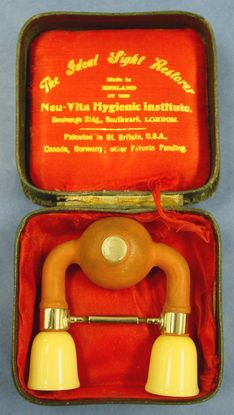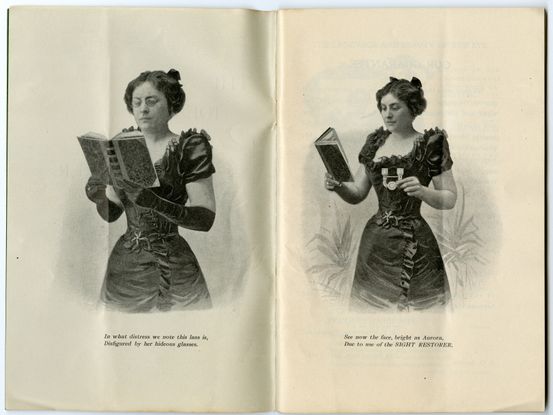January 1, 2021
Author: Jenny Benjamin, Director, Truhlsen - Marmor Museum of the Eye® & The Stanley M. Truhlsen, MD Director of Ophthalmic Heritage
We ring in the new year with one subject that I find fascinating. That is the history of quack medicine, which is aggressively promoted, fraudulent medical treatment. In the late 19th and early 20th centuries, there was an avalanche of cure-alls along with advertisements to sell them. The Museum of the Eye® has a collection of these items related to curing eye disease.
Recently, the Academy museum and its public eye health website, EyeSmart®, collaborated to capture a list of some of the worst offenders.
It is important when looking at the history of quack medicine that it isn’t confused with early medical treatment that we would consider primitive or misinformed. Plenty of learned physicians employed medical treatment that may shock us today: leeches, mercury pills and lead salts among them.
What distinguishes quackery is that it was sold knowingly to be worthless, which makes their crimes worse as unsuspecting patients were endangered merely for profit.
As the EyeSmart list notes, one of the worst offenders was Charles Tyrell and his Ideal Sight Restorer. Tyrell tried to convince people that they would not need glasses as long as they did the proper eye exercises. Not knowing anything of eye anatomy, Tyrell’s product provided a gentle suction against the closed eyelids and rubbed the area around the eyes to increase blood flow and tone the eye’s muscles.

“Professor” Tyrell was a masseur who obtained a medical degree at age 57 from the New York Ecelectic Medical College. He had a private practice and two mail order concerns, one being the Ideal Co. On several occasions the American Medical Association investigated Tyrell and his company, proclaiming his device to be “pseudomedical claptrap.”

The Museum of the Eye has three versions of the Ideal Sight Restorer plus an accompanying pamphlet published in 1901. Without a hint of hyperbole, the pamphlet suggests we “spend a moment in the company of the poets” and then lists quotes from the likes of Shakespeare and Byron all on the beauty of eyes.
It then notes some tragic stories from people who have lost their sight. If this wasn’t a hard enough sell, they have employed a beautiful model, “disfigured by her hideous glasses.” All she, and you, have to do is apply the Ideal Sight Restorer. The company guaranteed success but would not provide the instrument on trial — their terms were “strictly cash”!
From 1901 to 2021, there have been 120 years of progress since the Ideal Co. proclaimed “the eye is the chiefest channel of the soul’s expression.” That is probably the only true thing they ever said.